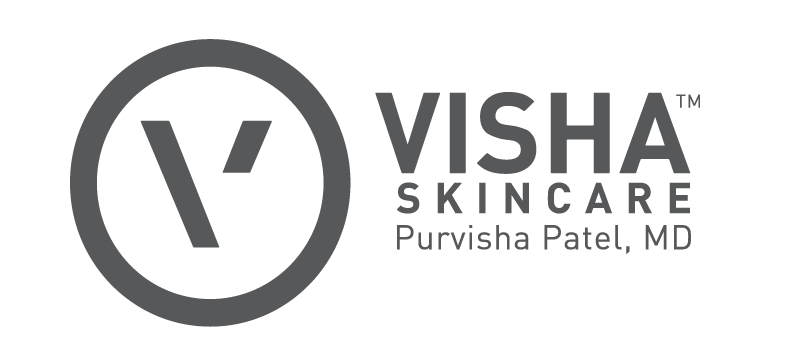
Essence posted "Debunking The Myth: Shea Butter Is Not Sunscreen" The article includes Visha Skincare founder, Dr. Purvisha Patel's expert insights on shea butter and wether or not its enough to protect even brown skin from sunburn.
SHEA BUTTER IS NOT A REPLACEMENT FOR SUNSCREEN. DR. PATEL WEIGHS IN ON THE MYTH AND WHY IT SHOULD BE DEBUNKED.
Let’s get right to the point: shea butter isn’t sunscreen! While shea butter has numerous advantages, it is not sufficient to shield you from the sun’s harmful rays.
This was a heated topic of discussion on Twitter, earlier this week (hence our deep dive):
“Shea butter has an estimated SPF of 3 to 4. This is not enough sun protection for adequate UV protection to prevent hyperpigmentation, DNA damage, skin cancers, photoaging, and wrinkles,” says Dr. Purvisha Patel, Board Certified Dermatologist and Founder of Visha Skincare. “We need to wear an SPF 30 on a daily basis for adequate sun protection.”
According to Dr. Patel, shea butter is best used on dry or inflamed skin, and in combination with a humectant. “Shea butter contains several types of fatty acids — including linoleic, oleic, palmitic, and stearic acids — that improve the skin’s natural barrier. Most moisturizers, including anti-aging moisturizers, often have active ingredients added to them to help with fine lines and wrinkles.”
So, how did the shea butter myth get started? Nobody knows for sure, but Dr. Patel believes it stems from People of Color’s historical relationship with the natural skin healer.
“It has been used in African countries for centuries as a moisturizer,” she explains. “It has a low SPF and has been observed on melanated people who have a natural skin SPF of 5-7. It can actually help with severe burns by moisturizing and soothing them afterward. However, it does not provide appropriate SPF protection.”
Dr. Patel wants to make it clear that while shea butter has many benefits for people of color, sunscreen is also essential. “SPF 30 is important for People of Color to prevent skin cancer and photoaging. Just because melanated individuals don’t get red and blister/burn does not mean we cannot burn,” Dr. Patel explains. “A sunburn in brown skin usually presents as peeling and tender skin after sun exposure, which means that DNA damage is still happening.”
SPF is best applied in mineral form, and there are numerous tinted sunscreens on the market that don’t create a white cast. The sun protection factor, or SPF, stops UV radiation from activating melanocytes and causing black patches. Because melanocytes are extremely sensitive, SPF 30 should be worn every day, even if it appears that there is no sun.
Dr. Patel advises that there are important times in which to apply sunscreen and shea butter. “It’s best to apply shea butter after getting out of the shower to help trap in moisture,” she points out. “Sunscreen should be used on sun-exposed skin every day before going outside. There are some sunscreens that act as moisturizers as well that also have shea butter as an ingredient.”
Here is a list of the Top 5 Sunscreens we use to protect ourselves from UV rays.
01 EVERYDAY by Unsun Mineral Tinted Face Sunscreen Lotion
This sunscreen is tinted with mineral pigments. With its distinctive tinted face sunscreen SPF 30 that flawlessly blends into the skin without leaving a trace, there’s no need to compromise on protection and appearance. There are two hues to choose from light-medium and medium-deep. It may be used alone or under makeup and has a fantastic matte finish.
02 Black Girl Sunscreen Make It Hybrid™ SPF 50 Sunscreen
03 Ghost Democracy Invisible Lightweight Daily Face Sunscreen SPF33
04 Thrive Causemetics Sunproof 3-in-1 SPF Primer Component
05 Obagi Medical Sun Shield Broad Spectrum SPF 50
EVERYDAY BY UNSUN MINERAL TINTED FACE SUNSCREEN LOTION
This sunscreen is tinted with mineral pigments. With its distinctive tinted face sunscreen SPF 30 that flawlessly blends into the skin without leaving a trace, there's no need to compromise on protection and appearance. There are two hues to choose from light-medium and medium-deep. It may be used alone or under makeup and has a fantastic matte finish.
BLACK GIRL SUNSCREEN MAKE IT HYBRID™ SPF 50 SUNSCREEN
Protect your skin from damaging UVA/UVB rays while getting the best of both worlds. This dewy-finish mineral and synthetic solution with zinc-oxide is designed to protect against sun damage without leaving a white residue. Make it Hybrid is a broad-spectrum SPF 50 made especially for women, with natural ingredients like aloe, lavender, and shea butter to moisturize, soothe, and heal your skin.
GHOST DEMOCRACY INVISIBLE LIGHTWEIGHT DAILY FACE SUNSCREEN SPF33
This broad-spectrum mineral sunscreen leaves no chalky residue and protects and hydrates the skin for a healthier appearance. 20.0 percent Zinc Oxide (Non-Nano Clear), 4% Niacinamide, 1.5 percent Artichoke Leaf Extract, and 1.3 percent Turmeric Extract are included in the formula.
THRIVE CAUSEMETICS SUNPROOF 3-IN-1 SPF PRIMER COMPONENT
Sunproof 3-in-1 Invisible Priming Sunscreen with SPF 37 from Thrive Causemetics is the ultimate multi-tasking primer that transforms skin into the perfect canvas for cosmetics (or just velvety skin on its own) that lasts up to 16 hours. SPF 37 protects, hydrates, smoothes, and shields skin from UVA and UVB radiation while also providing a water-resistant, velvet-matte finish that thoroughly moisturizes.
OBAGI MEDICAL SUN SHIELD BROAD SPECTRUM SPF 50
A matte-finish non-comedogenic and dermatologist-tested sunscreen. This sunscreen is suggested by the Skin Cancer Foundation as a good broad-spectrum sunscreen. It's suitable for all skin types and has mattifying agents to keep oiliness and shine under control throughout the day.
